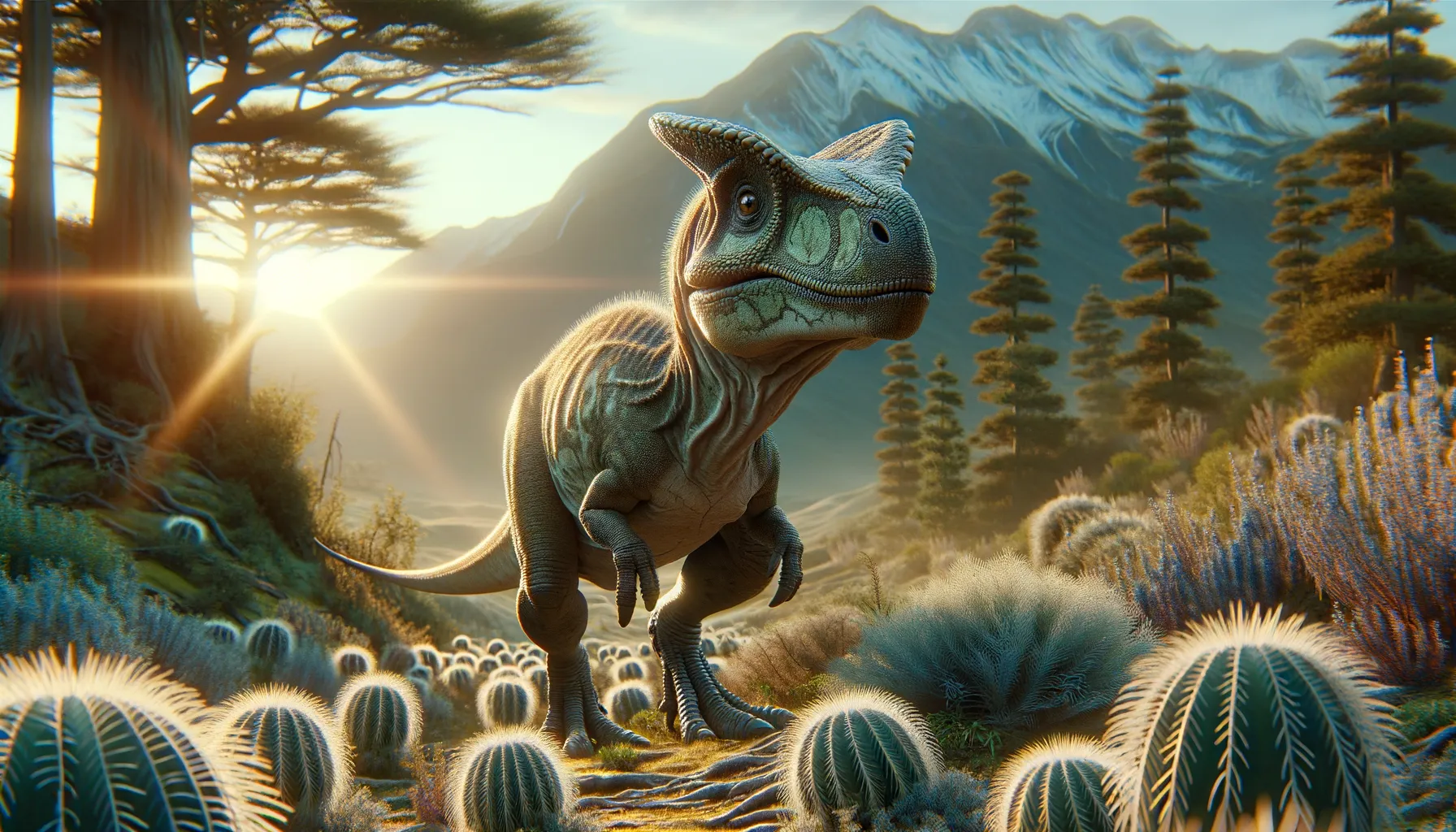
Wannanosaurus
Small but mighty in survival and spirit.
Period
Cretaceous
Length
Measured roughly 1 meter in length.
Height
Stood about 60 centimeters tall.
Weight
Weighed approximately 10 kilograms.
Wannanosaurus was a small, bipedal herbivorous dinosaur that lived during the late Cretaceous period. This dinosaur, part of the pachycephalosaurid family, is known for its dome-shaped skull, which was likely a protective feature. Despite its diminutive stature, Wannanosaurus provides valuable insights into the diversity and adaptability of ornithischian dinosaurs in prehistoric East Asia.
Diet
Wannanosaurus was an herbivore, feeding mainly on plants. Its diet likely consisted of leaves, fruits, and seeds found in its forested environment.
Hunting
As a herbivore, Wannanosaurus did not actively hunt. It would have foraged for food, moving quietly through the underbrush to avoid predators.
Environmental challenges
Living in a lush, forested habitat, it faced challenges such as finding adequate food sources and evading predators. Seasonal changes could also impact the availability of its plant-based diet. Small size may have been advantageous for hiding but made it vulnerable to larger predators. Climate fluctuations might have influenced the growth of vegetation, affecting its survival.
Speed
Relatively slow due to its small size and build.
Lifespan
Estimated at around 10 to 20 years.
First discovery
Discovered in Anhui Province, China, in 1977.
Fun Facts
- Wannanosaurus was a small dinosaur that lived about 80 million years ago during the Late Cretaceous period.
- This dinosaur was about the size of a rabbit, making it one of the smallest known dinosaurs.
- Wannanosaurus was a herbivore, meaning it primarily ate plants.
- It was discovered in China in 1977 and is named after the place it was found, the Wannian Formation.
- Wannanosaurus belonged to a group of dinosaurs called Pachycephalosaurs, known for their thick-skulled members.
- This dinosaur's small size might have helped it hide from predators and find food easily in dense vegetation.
Growth and Development
Wannanosaurus likely experienced steady growth through its juvenile stages, with skull development being a significant aspect. The dome-shaped skull would have developed as it matured, perhaps related to competition or mating. Its small body size suggests it reached adulthood relatively quickly. Growth patterns would have been influenced by food availability and environmental pressures.
Habitat
Wannanosaurus inhabited forested areas in what is now China. It thrived in warm, humid climates typical of the late Cretaceous. Its environment would have included dense vegetation, ideal for its herbivorous diet. Proximity to water sources would have been crucial for its survival.
Interaction with other species
Wannanosaurus may have coexisted with other small herbivorous and carnivorous dinosaurs. Its small size meant it had to avoid larger predators, possibly leading to discreet social behavior. Fossil evidence provides limited insights into its specific interactions with other species. It might have been part of a nuanced ecological network, involving competition for resources.
Natural lifespan
Wannanosaurus likely lived for about 10 to 20 years in the wild.
Reproduction
Wannanosaurus likely reproduced by laying eggs, as with most dinosaurs. Little is known about its specific mating rituals or nesting behavior. The dome-shaped skull might have played a role in courtship displays or rival interactions. Fossil evidence of eggs or nests is limited, impeding deeper understanding.
Social behaviour
Wannanosaurus might have engaged in minimal social behavior due to its small size. It could have been solitary or formed small groups for feeding and protection. The dome-shaped head structure suggests potential use in social interactions or territorial disputes. Adaptability in behavior would have been crucial for survival in a dynamic environment.
Fossil locations
Wannanosaurus fossils were first discovered in Anhui Province, eastern China. These fossils provide insights into the dinosaur's structure and lifestyle. The discovery area is significant for understanding the diversity of Cretaceous dinosaurs in Asia. Ongoing excavations might reveal more about its distribution and ecology.
